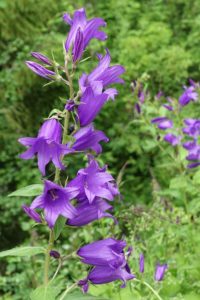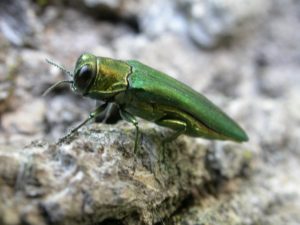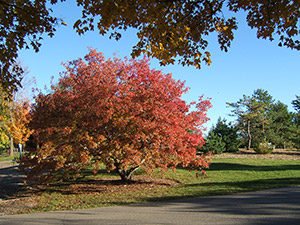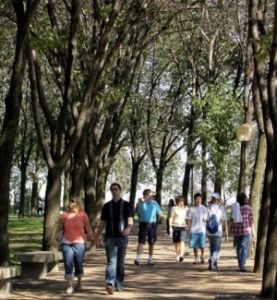Much-Heralded Major Conservation Legislation — S. 47 – Mandates “On-the-Ground” Actions

Senate bill S. 47 enjoyed strong support from the conservation community because it expanded protection for several National parks and wilderness areas, mandated easier access to public land for hunters and anglers, and provided permanent status for the most important program that funds purchase of lands and waters for recreation and other purposes – the Land and Water Conservation Fund. It passed the Senate on February 12, 2019 by a vote of 92 for, 8 against. The bill passed the House of Representatives on February 26, 2019 by a vote of 363 for, 62 against. Everyone expects President Trump to sign it into law.
The new language had previously been a stand-alone bill introduced in two previous sessions of Congress. The first version, S. 2240, was introduced in 2016; I blogged about a hearing on that legislation in May 2016, describing my reservations. The bill was not enacted in that Congress. It was reintroduced in 2017, when it was called the “WILD Act” (S. 826).
Title VII of the new legislation now expected to become law governs programs implemented by the Departments of Interior, Agriculture (specifically the Forest Service) and the U.S. Army Corps of Engineers. It also applies to the head of “any federal agency” having duties related to planning or treatment of invasive species “for the purpose of protecting water and wildlife on land and in water.”
Title VII takes the form of an amendment to the Fish and Wildlife Coordination Act (16 U.S.C. 661 et seq.)
As in the original 2016 bill (S. 2240), the new law – at Title VII, §10(c)(2)(C) – agencies are required to adopt strategic plans for their invasive species programs. The priorities in the federal agencies’ invasive species plans will be set by state governors – not the federal agency charged with managing that land unit and its resources.
- Under§10(a)(4)(C), tribal, regional, State, or local authorities are authorized to weigh in on the determination of which terrestrial or aquatic species fit the definitions of ‘invasive’ and ‘alien’ species.
- Under §10(c)(3).the Secretaries are required, in developing their strategic plans, to take into consideration the ecological as well as the economic costs of acting or not acting, I welcome this provision.
Like the original 2016 bill (S. 2240), the new law – at Title VII, §10(g) – (i) – requires land-managing agencies to allocate their invasive species funds according to the following formula: 75% for on-the-ground activity; 15% for combined research and outreach; 10% or less for administrative costs.
- Fortunately, “on-the-ground” activities have been expanded to include
- detection and monitoring.
- “the use of appropriate methods to remove invasive species from a vehicle or vessel capable of conveyance.”
- “investigations regarding methods for early detection and rapid response, prevention, control, or management of the invasive species.”
- It is unclear whether “on-the-ground” activities include the salaries of staff who manage such programs from desks (as distinct from people who work in the field).
- Unfortunately, the definition of “prevention” is unnecessarily limited by §10(a)(6) (B). This clause authorizes agencies ‘‘to impede the spread of the invasive species … by inspecting, intercepting, or confiscating invasive species threats prior to the establishment of the invasive species onto land or water of an eligible State.” This clause reflects too narrow an understanding of prevention actions. They are not limited to (inefficient) inspection and seizure programs at “borders”. It is much more efficient to apply measures intended to prevent the presence of a pest in the transported good in the place of production. One example is APHIS’ requirements governing nursery stock intended to be shipped interstate so as to prevent the spread of the sudden oak death pathogen.
Following the revised 2017 version of the bill (text here; see my blog here) the law requires the agencies to make “substantive annual net reduction of invasive species populations or infested acreage …” (The original bill mandated an annual reduction of 5%.) It is unclear whether this mandate applies to all invasive species on the affected acreage, or only those designated by a flawed process (see below) and included in the agency’s strategic plan [Title VII, §10(c)(1)].
Under Subsection (d), the plan is to prioritize the use of methods that are effective (as determined by the Secretary, based on sound scientific data); that minimize environmental impacts; and control and manage invasive species in the least costly manner. I worry that this requirement, combined with the mandate to achieve “annual net reductions” in invasive species numbers, will promote the use of chemical pesticides.
Under Section (f), agencies are to apply all available tools and flexibilities to expedite invasive species control projects and activities. Those projects are to be located in an area that is at high risk for invasive species introduction, establishment, or spread; and determined by the Secretary to require immediate action to address that risk. These actions are to be carried out in accordance with applicable agency procedures, including any applicable land or resource management plan. This language apparently replaces earlier efforts to exclude invasive species control projects from analysis under NEPA. How this mandate interacts with state governors’ setting priorities under §10(c)(2)(C) is unclear.
Remember that under the funding allocations specified in Title VII, §10(g) – (i), “… not more than 10% may be used for administrative costs incurred to carry out those programs, including costs relating to oversight and management of the programs, recordkeeping, and implementation of the strategic plan …”. At the same time, §§10(e), (j), and (l) require economic analyses and reports detailing compliance with requirements and results of projects. In other words, the new law restricts expenditure of funds for “administrative costs” but imposes significant additional administrative duties.
Fortunately, Title VII §10(k)(1) states that “Nothing in this section precludes the Secretary concerned from pursuing or supporting, pursuant to any other provision of law, any activity regarding [invasive species] control, prevention, or management …, including investigations to improve the control, prevention, or management of the invasive species.
In all iterations, the bills called for the projects to be carried out through collaboration with wide range of partners, including private individuals and entities – apparently including non-governmental organizations such as state or local invasive plant coalitions.
Earlier in Congressional consideration of the new law’s provisions, the National Environmental Coalition on Invasive Species (NECIS) responded by adopting its own description of an effective, comprehensive invasive species program. Under the title “Tackling the Challenge of Invasive Species,” the coalition makes the following major points:
- Focus prevention efforts on pathways of introduction. Until they are closed, managing established infestations will be a never-ending burden.
- Broader and more aggressive efforts to control existing invaders is a solid investment, but should not be at the expense of other aspects of a comprehensive national response.
- Close loopholes in the “Injurious Wildlife” sections of the Lacey Act to provide agencies with more agile processes for regulating the importation and transport of harmful invasive species.
- Enhance funding for invasive species control and management projects; prioritize efforts to reduce invasive species’ spread at landscape scales.
- Ensure that federal actions do not inadvertently promote the introduction or spread of harmful invasive species; use caution when promoting nonnative species for biofuels, bioenergy, or other
- purposes.
- Adopt metrics to gauge the effectiveness of efforts to prevent the introduction and spread of new invasives and to achieve long-term control or removal of existing invaders.
- Support robust research and outreach programs, which are essential to improving the efficacy of federal, state, and local invasive species prevention and control efforts.
Given the new legislation’s focus on land-managing agencies, I point to the importance the coalition gave to research on the invasion processes utilized by various species and education of land and water users so as to gain their cooperation. These recommendations are directly counter to the new law’s stringent limitations on research and “outreach”.
I think particularly pertinent are the recommendations on metrics to measure programs’ efficacy. Proper metrics should metrics address outcomes and program effectiveness re:
- efforts to prevent species introduction and spread
- activities that target pathways or vectors
- the effectiveness of treatments in eradicating or reducing the target invasives.
Potential additional metrics include, but are not limited to:
- Rate of new invasions; possibly categorized by type of invader or geography
- Acres infested and changes in infestations over time
- Acres protected, based on projections of future spread avoided by eradication
- Economic impact of invasive species
- Number of species intercepted.
The full document is available here .
Posted by Faith Campbell
We welcome comments that supplement or correct factual information, suggest new approaches, or promote thoughtful consideration. We post comments that disagree with us — but not those we judge to be not civil or inflammatory.
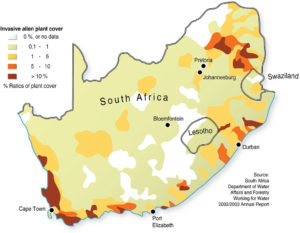
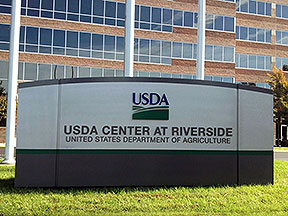
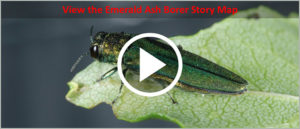
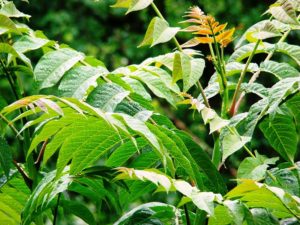 Ailanthus altissima
Ailanthus altissima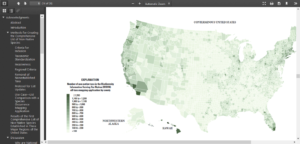









 trout lilies & spring beauty
trout lilies & spring beauty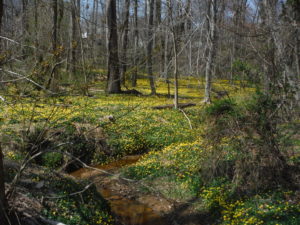
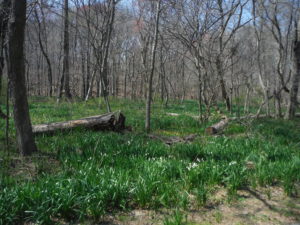
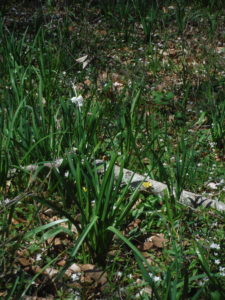

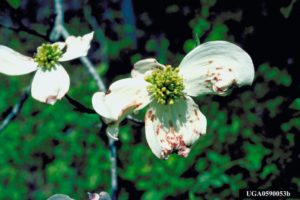 dogwood anthracnose
dogwood anthracnose